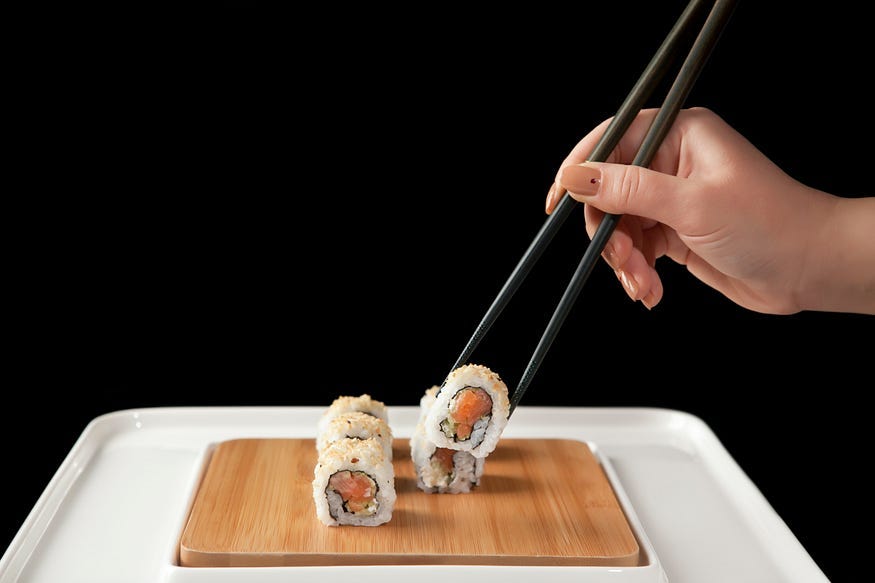
Change, no matter how late, is never too late.
If a person has been using the wrong chopstick technique for 35 years, can they still learn the correct way?
When I was young, my chopstick technique was not correct. However, I didn’t make a conscious effort to correct it. The adults around me were lenient, saying that as long as I could eat, it was fine. As a result, from childhood to adulthood, I continued to use the wrong chopstick technique.
Looking back, my main mistake was using the fleshy part of my ring finger to support the chopstick, rather than using the side of my finger to hold it, which led to an unstable grip.
Although they say that any cat catching a mouse is a good cat, as long as you can eat, who cares if you use chopsticks correctly or not? But deep down, I really wished I could correct my technique.
For example, during gatherings with friends, someone might casually remark, “Oh, your chopstick technique isn’t quite right, it looks awkward.” Even though I’d respond with a laugh, saying, “Well, as long as I can eat,” I couldn’t help feeling uncomfortable.
Moreover, at banquets, I’d struggle to pick up certain dishes, especially those slippery ones like noodles or meatballs. While others could pick them up confidently, mine would wobble, sometimes falling into the bowl or even onto the table, making me feel embarrassed.
Even during regular meals, I’d prefer using a spoon to eat rice and vegetables, as it was more stable and efficient than using chopsticks.
All these inconveniences and discomforts, however, couldn’t prompt me to change. I used the wrong chopstick technique for 35 years.
So, what finally pushed me to set this “grand” goal of learning the correct technique?
It all traces back to a business trip to Canada. In 2016, I visited Canada for the first time. The head of our department of my law firm warmly invited me to his home. That day, he drove me around, showing me their community’s ice hockey game and various sights. Finally, they ordered a lot of Chinese takeout from a local Chinese restaurant in Ottawa. The entire family had Chinese takeout to celebrate my visit.
Many of their relatives at the gathering were non-Chinese and didn’t know how to use chopsticks. So, during the Chinese takeout meal, I became the center of attention. “Could you teach us how to use chopsticks? How do you do it?”
I couldn’t have felt more awkward, but I had to step up. I could only vaguely explain the principles of chopstick use, without demonstrating hand-in-hand, as my technique would be incorrect. I didn’t want them to later show off using the wrong technique I’d taught them.
After that awkward moment, when I returned to China, I made a resolute decision to learn the correct chopstick technique.
It was quite simple. I searched online for videos on how to use chopsticks, and there were plenty. The basic principle is to have one chopstick act as the anchor while the other is maneuvered. The anchor chopstick is secured by the base of the thumb, which presses the stick against the knuckle of the ring finger, and against the purlicue. The maneuvering chopstick is held by your thumb, index finger, and middle finger to coordinate the up-and-down motion.
The principle was easy to grasp, but it took effort to practice. So, every lunch break at work, I’d head to the cafeteria, sit quietly in a corner, set up the correct chopstick posture, and gradually pick up rice and vegetables.
Initially, it felt awkward and slow. I longed to revert to my old technique because eating became tiring, and I was slower. After practicing, my fingers and palms would ache because I had never used those muscles to handle chopsticks in that direction before.
I used to be a quick eater, but now each meal took over half an hour. However, I persisted. It didn’t take too long — around two weeks — before I felt I’d mastered the correct technique. My speed of picking up food with chopsticks returned to normal. Even dishes that used to challenge me, like slippery noodles, meatballs, and dumplings, were now firmly under my control.
At this point, I truly realized that using the correct technique makes tasks easier. Learning the proper chopstick technique made me more willing to attend banquets, without worrying about those awkward situations.
Additionally, when I traveled abroad, I felt more confident because I could confidently teach foreign friends the correct way to use chopsticks — a true mark of a Chinese person.
Correcting my chopstick technique brought me a significant realization: it’s never too late to change, and changing is actually not that difficult.



